Many people are confronted with barriers while navigating both our physical and digital worlds. When products and systems don’t fit their needs, people are forced to adapt to their surroundings.
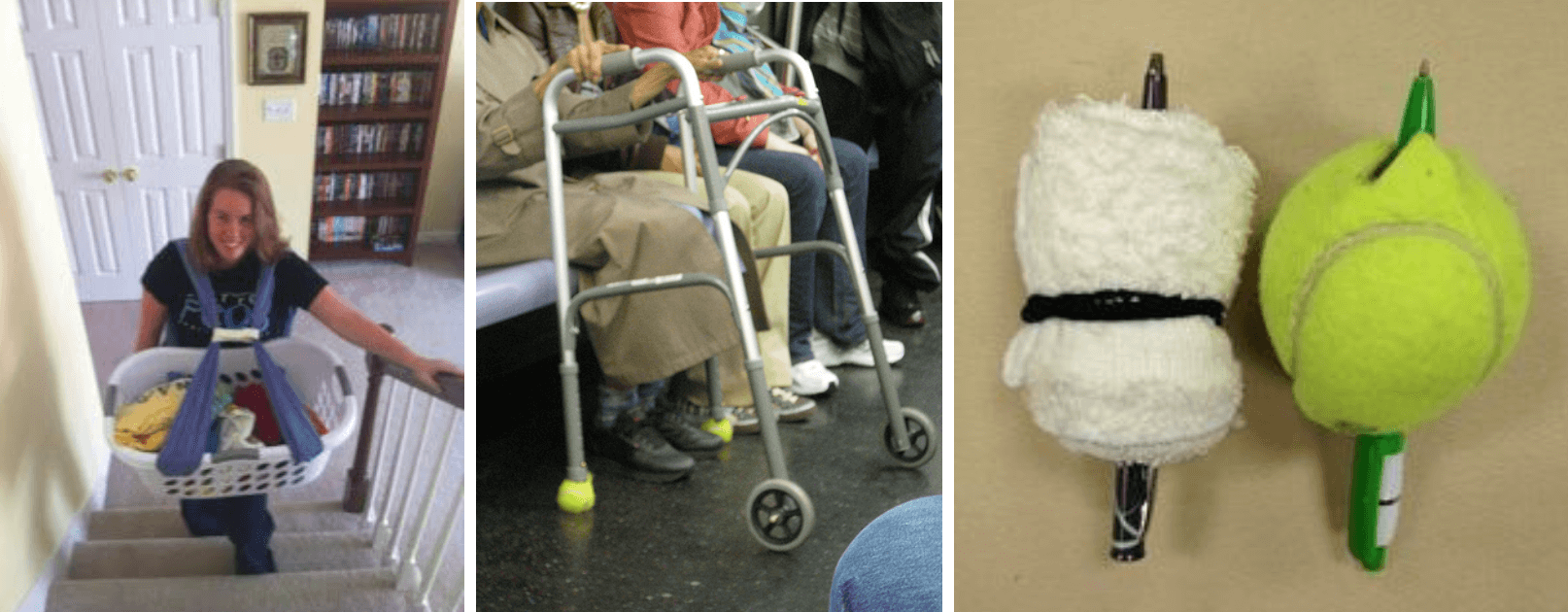
A woman with limited arm strength creates a tool to help fasten and carry a laundry basket around her torso.
A walker that is too noisy and slippery is mended by the addition of tennis balls to the bottom.
Pens are bound in small towels or put through tennis balls to help those who struggle with fine motor skills.
Understanding those adaptations is the key to meaningful insights, and the way to these insights is through inclusive design. Let’s start by defining what inclusive design is.
To begin, it is not designing one thing for all people, nor is it simply marketing to a subset of individuals. For example, the typewriter works great for many, but it isn’t great for people who don’t have control of their fingers or have fingers at all. Still, the typewriter was made with the needs of blind users into consideration, which is the part that makes it an inclusive solution. An inclusive solution does not mean it is the only solution for everybody.
A pink razor isn’t inclusive design because it was designed to be marketed towards the female population. Inclusive design is involving women in your design process when they previously weren’t invited to participate.
Recognizing Exclusion
Disability is now defined by the World Health Organization as a mismatched human interaction, a change from their 1980 definition as a personal characteristic. This helps us to understand that disability happens at the points of interactions between a person and society, temporary or permanent. Physical, cognitive, and social exclusion are all the results of mismatched interactions.
The world now has more than 7 billion people. Products they need should fit each of them physically, cognitively, and emotionally. If each designer assumed their abilities were standard, their products would only be accessible to a small subset of people. When human diversity is looked at as a resource instead of a roadblock, it leads to innovation. Understanding why and how people are excluded gives us actionable steps to take towards inclusive design. It’s a process that hasn’t been set in stone, that’s still being written about, improved, and changed as we practice it.
Learning From Diversity
Inclusive design is a process that leads us to improve the experience for diverse sets of users under diverse sets of circumstances. Learning how people adapt to the world around them by spending time understanding their experience from their perspective is critical to inclusive design. But, having people with these perspectives on your design team is an even better start.
When empathizing with exclusion and disability, it’s not enough to rely on imitating differences. For example, putting on a blindfold will not truly give you the full experience of being blind. We can try to imagine the experience of someone different than us, but we can’t know their true contexts. With that said, it is important to realize that Inclusive design is a process. It’s including those with different experiences who are delighted and frustrated by unexpected things and designing a diversity of ways to participate with dignity.
Solving For One, Extending to Many
Designing for people with permanent disabilities can seem like a constraint, but the resulting designs can actually benefit a much larger set of people. For example, closed captioning was created for the hard of hearing community, but the non-hearing impaired benefit from it in loud spaces or even for language learning. Dark Mode was also initially conceived to benefit people with vision impairments. But today, many without vision impairments also benefit when they use their devices at night or in low-lit environments. Audiobooks, speech to text, and lots of other examples have similar stories.
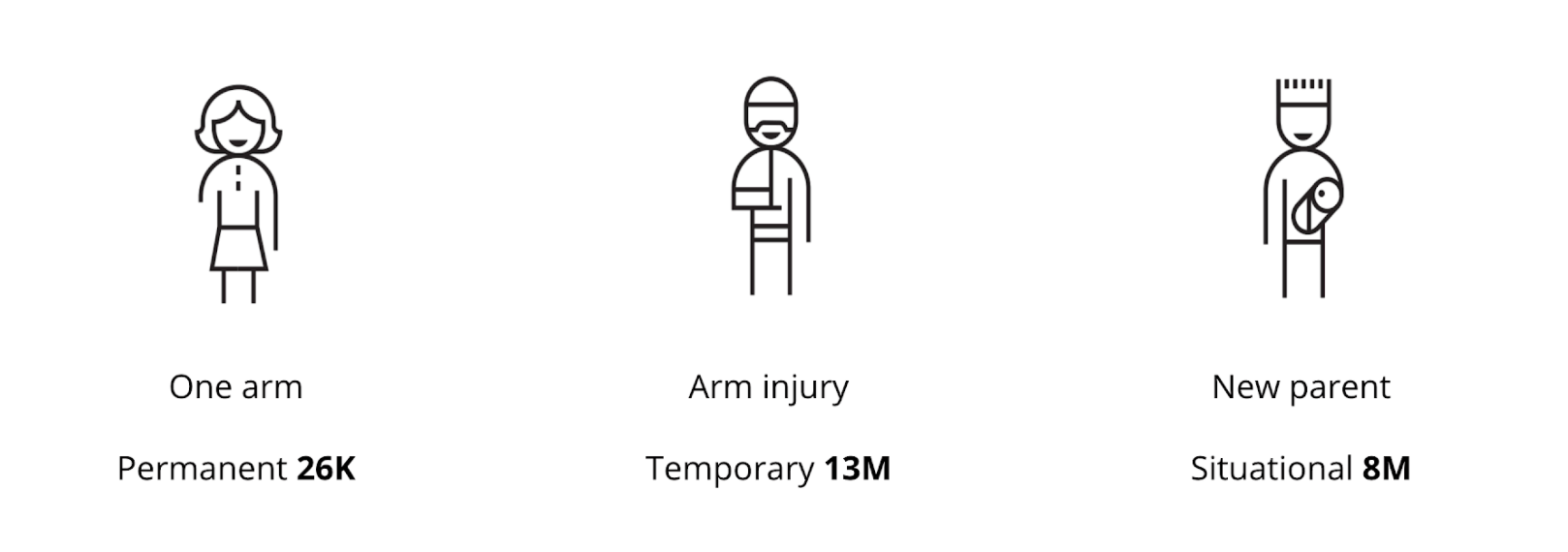
The beauty of designing for constraints it that it benefits so many more than we may have even thought. Consider the example by Microsoft of a one-armed person. In the end, designing for them would benefit the temporarily injured, and even the situationally disabled. This example proves that exclusion is sometimes temporary or situational.
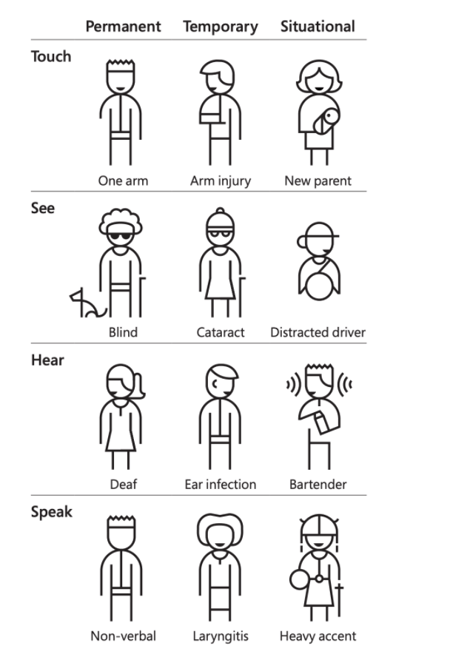
The more thoughtful we are in our design process, the more inclusive and innovative our end product can be. This is especially true when we consider the customer experience. With the end state in mind, it is important that we realize that designs transcend typical uses. Doing this allows designers to innovate in new ways and create products with multiple purposes that best match the practical needs of diverse end-users.
The best way to start on this path is by using customer insights to design better experiences. The result of which is an increase in revenue and brand value.

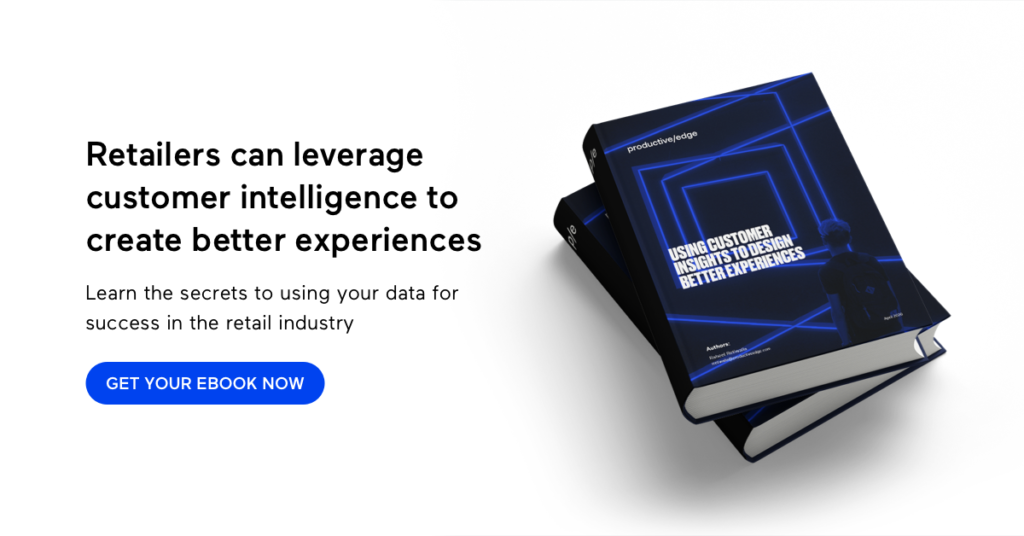
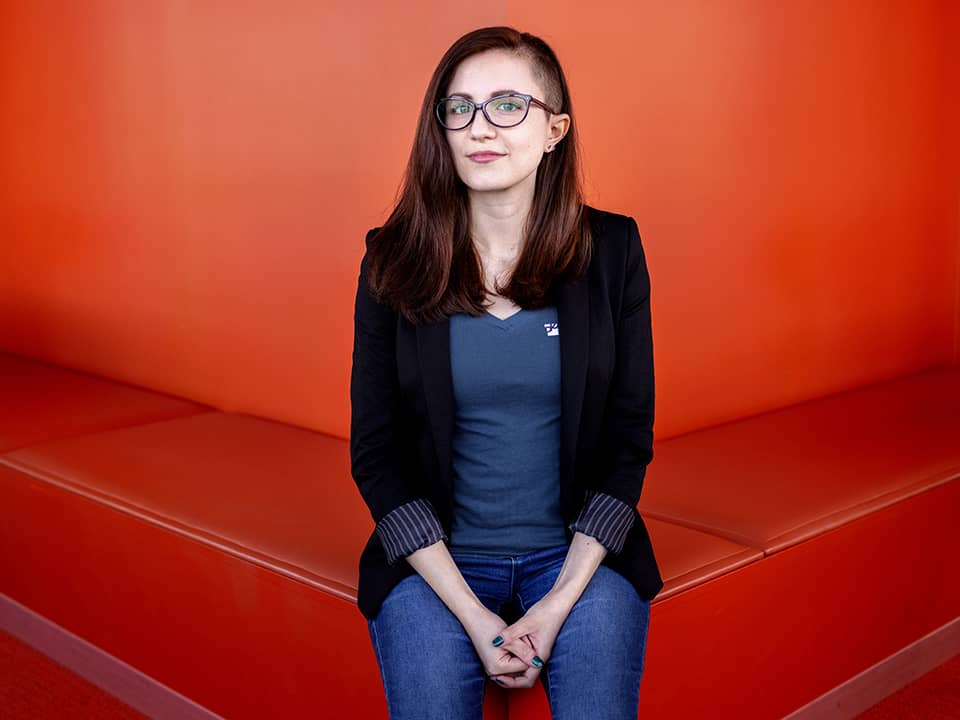
.png)

.png)